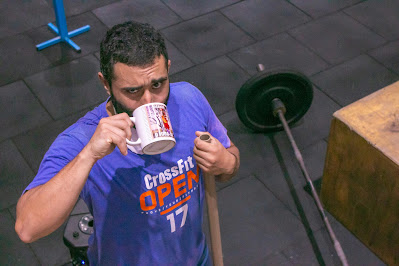Caffeine as a naturally occurring drug has a very rich history. It has travelled around the world in mysterious ways through coffee beans. It originally required specified equipment to brew, but with the invention and popularisation of instant coffee, it has truly reached the masses. While many drink coffee and derived beverages for enjoyment, it has physical benefits too. Athletes and any other population can reap the performance boost that caffeine provides.
Strength is measured most accurately by determining the 1RM of any particular exercise. 1RM, or one repetition maximum is the amount of weight that can be successfully lifted by the athlete only one time. A true 1RM is when continuously performing a second repetition with that weight is not possible. Caffeine has also demonstrated an improvement in the 1RM of upper body and lower body movements. At this point we can just wonder how such a substance even exists.
Everything has a limit though. A dose greater than six milligrams per kilogram of body weight is considered harmful for the body, and specifically for the cardiovascular and nervous system. This is not of a concern for people drinking coffee as a source of caffeine. Two to three cups in a day falls well under this threshold.
If you haven’t read the article regarding the effect of caffeine on endurance performance, I encourage you to do so.
The way in which it works is fascinating. Caffeine moves through the blood into the brain (only a few molecules are able to cross this barrier). Once in the brain, it attaches to receptor sites of the molecule called adenosine. Adenosine is responsible for the perception of tiredness and fatigue. Since caffeine molecules have blocked the sites, adenosine is not able to attach there and thus the feeling of fatigue is alleviated. This is exactly why people drink coffee to pull an all nighter before an exam.
Caffeine has been found to increase muscular performances. Shot put throwers and jumpers have benefited from the strength and power improvements. It has also been found to improve other metrics like hand grip strength and reaction time. Grip strength is essential during the resistance training sessions and sport performance. A small increase in the grip strength is associated with a better performance in exercises like the deadlift and its variations. Reaction time is crucial in athletic sport performance, and can significantly influence a competition's result.
Caffeine has been found to increase muscular performances. Shot put throwers and jumpers have benefited from the strength and power improvements. It has also been found to improve other metrics like hand grip strength and reaction time. Grip strength is essential during the resistance training sessions and sport performance. A small increase in the grip strength is associated with a better performance in exercises like the deadlift and its variations. Reaction time is crucial in athletic sport performance, and can significantly influence a competition's result.
If ingested before workouts, caffeine has been found to increase the adaptations of muscular strength improvements. These adaptations are in terms of the quality of movement, namely bar speed and power output. Pre workout caffeine ingestion is also linked with an increase in the total work performed in the entire session. This means that if you have the required dose of caffeine (which is usually two to six milligram per kilogram of bodyweight), you will be able to push with greater intensity and the overall volume of training will also be higher.
The studies researching the effects of caffeine in women are far lesser than the same type for men. This discrepancy is throughout the scientific literature, however. Despite the lower number, the quality of research was high and so it can be stated that caffeine does have positive effects on the strength performance of women. What is even more interesting to know is that this increase is observed in all the phases of the menstrual cycle. Thus women can always consider using caffeine to help them push through intense workouts throughout the month.
The studies researching the effects of caffeine in women are far lesser than the same type for men. This discrepancy is throughout the scientific literature, however. Despite the lower number, the quality of research was high and so it can be stated that caffeine does have positive effects on the strength performance of women. What is even more interesting to know is that this increase is observed in all the phases of the menstrual cycle. Thus women can always consider using caffeine to help them push through intense workouts throughout the month.
Everything has a limit though. A dose greater than six milligrams per kilogram of body weight is considered harmful for the body, and specifically for the cardiovascular and nervous system. This is not of a concern for people drinking coffee as a source of caffeine. Two to three cups in a day falls well under this threshold.
If you haven’t read the article regarding the effect of caffeine on endurance performance, I encourage you to do so.



Comments
Post a Comment